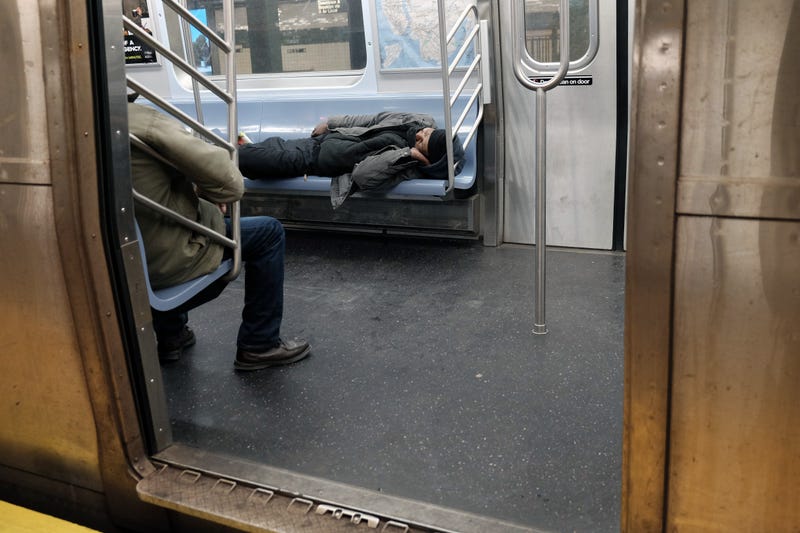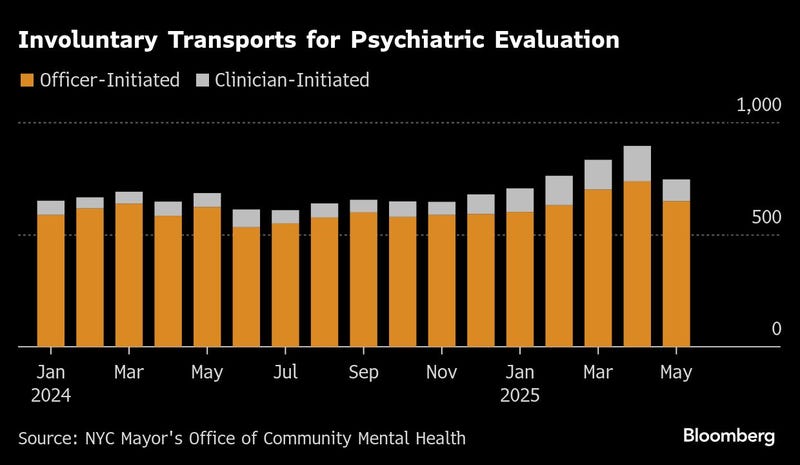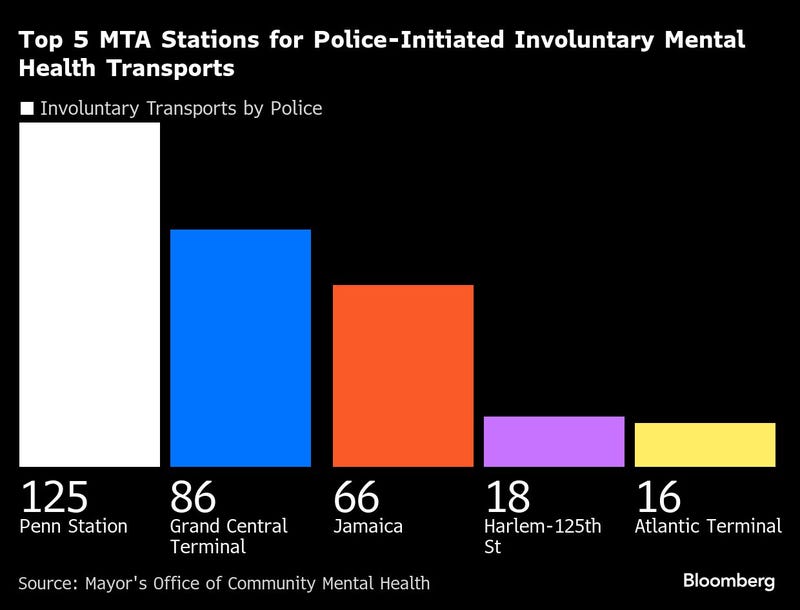
NEW YORK (BLOOMBERG) -- Mayor Eric Adams, facing a steep path to reelection, is bolstering efforts to reduce the number of mentally ill people on the streets and subways of New York City.
The city on Wednesday unveiled a dashboard showing where people with serious mental illness have been taken for psychiatric evaluation after contact with police or clinicians. Officials say it’s designed to give policymakers and the public a clearer view of where interventions occur and to measure the impact of new programs.
What the numbers already show is that most of the mentally ill removed from the subways came from just three major transit hubs — Penn Station, Grand Central Terminal and Jamaica Station.
The data also show a sharp rise in clinician-led transports, which have more than doubled since early 2024, driven by expanded outreach teams and a broader legal standard that allows police and medical workers to remove people who cannot meet their basic needs, even if they aren’t overtly violent.

“We have made major strides in accomplishing that vision by implementing effective programs at the city level, getting key amendments passed to state law, and changing the very culture that is now allowing more people to get the help they need and deserve, even when they don’t recognize that need themselves,” Adams said in a statement.
Clinician-led removals rose from 63 in January 2024 to 158 in April of this year. In the same period, there were nearly 11,800 transports under New York’s Mental Hygiene Law, including more than 1,600 from the transit system.
Most removals were carried out by police officers under provisions allowing them to take action when someone appears to be a danger to themselves or others. Clinician-led cases are more likely to begin with mobile crisis teams, calls to the national 988 hotline or referrals from homeless shelters.
Officials stressed that involuntary transports are just one part of the city’s response to the mental health crisis, with most hospitalizations occurring voluntarily after outreach workers connect people to services.

The city’s focus on the subway system intensified after a series of violent or high-profile incidents involving people with severe mental illness, including the 2022 death of Michelle Go, who was pushed in front of a train, and the 2023 killing of Jordan Neely, a homeless man who had long struggled with mental illness.
President Donald Trump has been pushing for cities like New York to prioritize efforts to tackle mental illness on the streets. In July, he signed an executive order directing federal agencies to prioritize funding for jurisdictions that move people with serious mental illness or substance-use disorders “into treatment centers or other appropriate facilities via civil commitment or other available means.”
That followed a March letter from US Transportation Secretary Sean Duffy to Metropolitan Transportation Authority Chairman Janno Lieber, warning that federal capital grants could be withheld unless the New York City transit system showed measurable progress on crime reduction and “expanded care for individuals struggling with mental illness.”
More stories like this are available on bloomberg.com.
